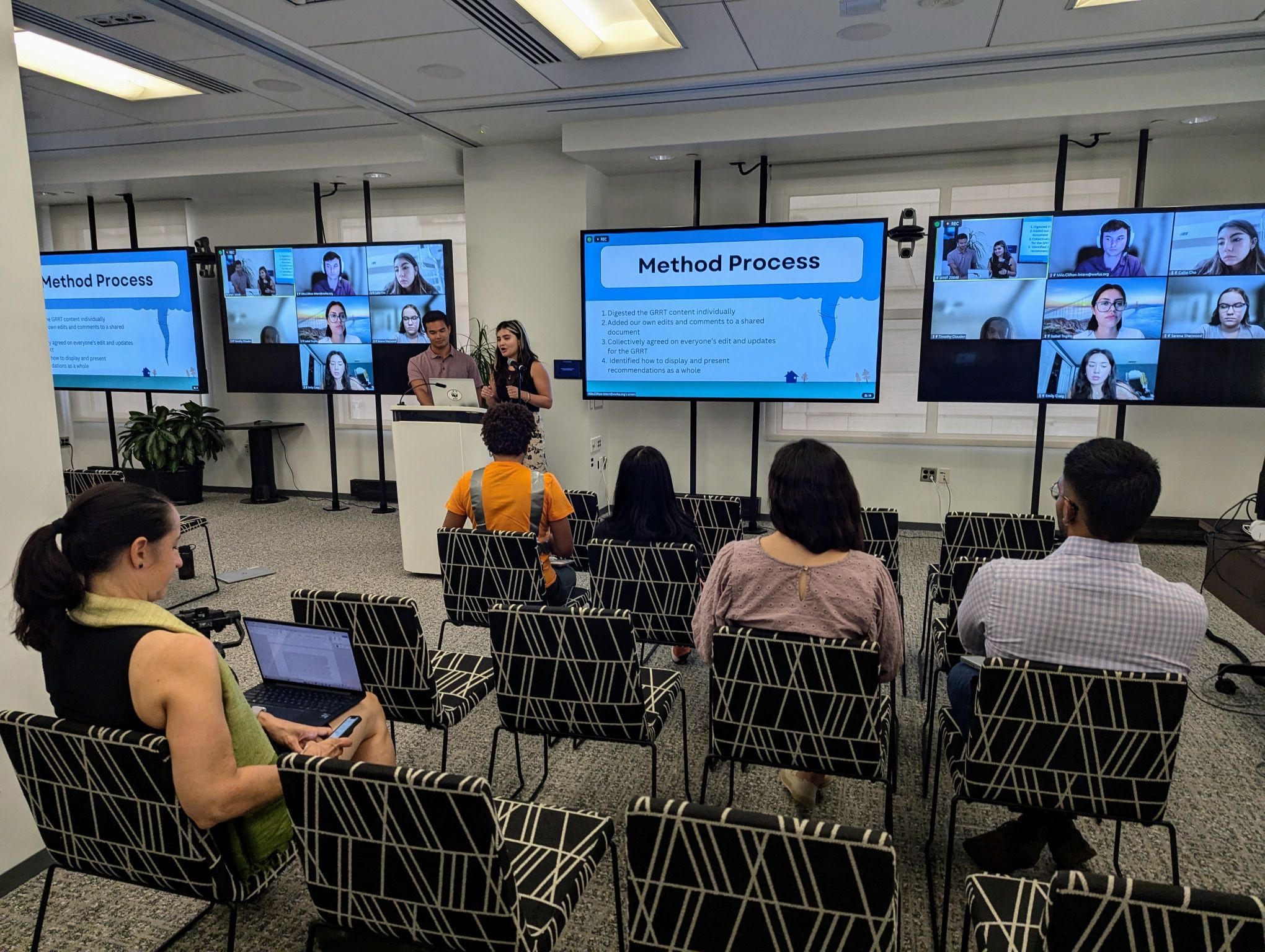Published on:
23 May 2016
Share this:
Community engagement and participation is an essential component of successful flood risk management. Communities that are engaged in flood risk management projects can contribute local knowledge based on their experience living with floods, helping to improve models and risk reduction techniques to reflect local realities.
Pickering, United Kingdom
In 2007, the small town of Pickering, in Ryedale, UK, experienced a major flood event with 48 homes and businesses flooded. The town is located just downstream of a major river, Pickering Beck, and has a long history of periodic river flooding, which is becoming more frequent.
The proximity of the town to the Pickering Beck and the repeated flood events drew the attention of the UK Environment Agency, which, in 2003, drew up hard engineering plans to protect the town. The plans, however, were based on limited community participation and limited data. The government decision-making process relied heavily on cost-benefit analysis, and the Environment Agency determined that the most cost-effective option was to construct flood walls to protect the town. Town members were dissatisfied with this hard engineering approach; that, combined with funding constraints, led the town to remain unprotected from floods until after the 2007 flood.
At the time the town of Pickering was struggling with flood risk management, a group of academic researchers were interested in learning more about local knowledge and experience with floods. The researchers approached the town of Pickering as a case study hoping to generate knowledge about flood risk in the community and work toward solutions for community flood management. Using advertisements in shop windows, the library, supermarket and community notice boards, the researchers recruited eight community members to join five researchers and a facilitator in forming the Ryedale Flood Research Group. The group met to develop an alternative to the hard engineering scheme proposed by the government, combining the knowledge of town members who had experienced floods and researchers who studied flood risk. This unique collaboration between academics and town members achieved several outcomes, including recommendations made in the Slowing the Flow at Pickering Report in 2011, and the Slowing the Flow at Pickering project funded by the UK Department for Environment, Food and Rural Affairs, from 2011-15. By March 2015, government and regulatory agencies, major land owners, local authorities, community representatives and researchers worked together to implement the following:
- Creation of woodlands in the floodplain and adjacent to the river to encourage infiltration
- Installation of large woody debris dams to slow down the flow of water
- Management of runoff utilizing catchment sensitive farming techniques
- Reduction of water flow through targeted blocking of moorland (upland temperate grass and shrubland) drains
- Establishment of no-burn zones along moorland streams to enhance infiltration
- Restoration of buffer zones along forest streams to enhance infiltration
The project also established a website to host its resources, had a conference and exhibition, and created a short project video. The project has been widely hailed as a success and has forged new ground in the co-generation of knowledge between Pickering residents and local researchers. This approach shows that communities and academic partners can work together to better understand flood risk and develop appropriate flood risk management methods. Successful integrated watershed approaches utilizing natural and nature-based techniques for flood risk management are not always more costly than traditional engineering techniques, and can often be the most cost-effective option.
Over the winter of 2015-16, Pickering received 50 mm of rainfall over a 36-hour period, and the towns approach to flood management was tested. Many areas of the country flooded as a result of this extreme rainfall, but Pickering did not experience any flooding during this rain event. The Slowing the Flow Partnership analyzed the way the upstream flood storage and other flood management methods performed during the rain event. The review concluded that these measures reduced the flow of floodwater between 15% and 20% in Pickering and, according to the Slowing the Flow Partnership, this reduction prevented the flooding of a number homes and the towns museum.
For more information about this project, visit:
The Ryedale Flood Research Group
View a short project video: https://www.youtube.com/embed/Oh5sjqnTfB0
Adapted from the following sources:
Department for Environment, Food and Rural Affairs (Defra) and the Slowing the Flow Partnership, Defra FCERM Multi-objective Flood Management Demonstration Project, Project RMP5455: Slowing the Flow at Pickering (London: Defra, 2015)
S. N. Lane et al., Doing Flood Risk Differently: An Experiment in Radical Scientific Method, Transactions of the Institute of British Geographers 36 (October 2010): 1536, doi: 10.1111/j.1475- 5661.2010.00410.x.
UK Forestry Commission, Slowing the Flow Scheme Helps Avoid Christmas Flooding, accessed May 6, 2016.



